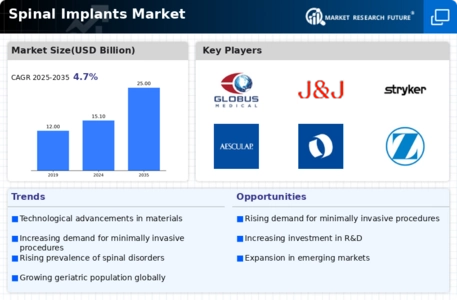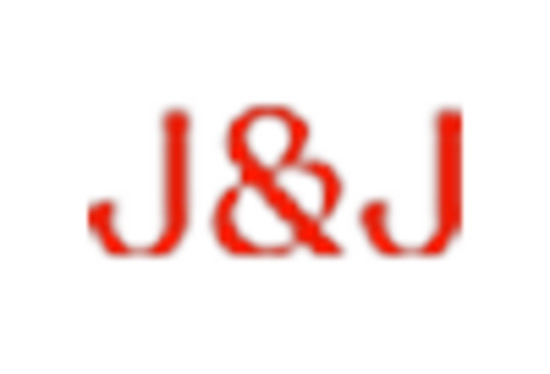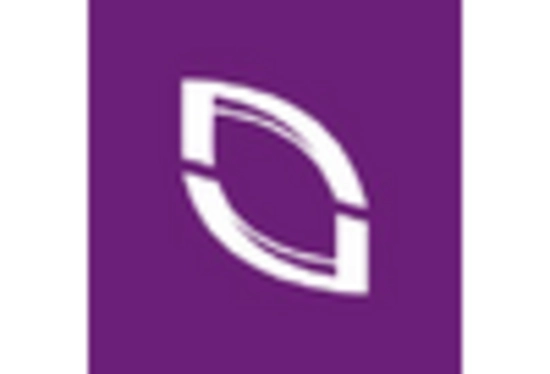Market Share
Introduction: Navigating Competitive Dynamics in the Spinal Implants Market
The spinal implant market is experiencing an unprecedented level of competition, driven by the adoption of new technology, the evolution of regulatory frameworks and the rising expectations of consumers for a more individualized health care. In this context, the leading players, such as the original equipment manufacturers (OEMs), IT system integrators and artificial intelligence companies, are striving to take advantage of the latest digital developments, such as data analysis, automation and Internet of Things (IoT), to enhance their product offerings and optimize their operations. Biometrics and patient-tailored solutions are the focus of the OEMs, while the IT system integrators are striving to improve the data interoperability in order to improve surgical outcomes. Also, the emergence of green initiatives is driving the companies to adopt sustainable practices, which further differentiates their market positions. The most promising opportunities for growth in 2024–2025 are in Asia-Pacific and North America, where the strategic deployment trends are converging with the local health care needs and the regulatory frameworks, thus creating the conditions for significant shifts in market shares.
Competitive Positioning
Full-Suite Integrators
These vendors offer comprehensive solutions across the spinal implants spectrum, integrating various technologies and services.
| Vendor | Competitive Edge | Solution Focus | Regional Focus |
|---|---|---|---|
| DePuy Synthes | Strong brand recognition and extensive portfolio | Spinal implants and surgical solutions | Global |
| Stryker | Innovative technology and strong R&D | Orthopedic and spinal implants | North America, Europe |
| Medtronic | Leading in spinal technologies and therapies | Spinal implants and neuromodulation | Global |
| Zimmer Biomet | Comprehensive orthopedic solutions | Spinal and orthopedic implants | Global |
Specialized Technology Vendors
These vendors focus on niche technologies and innovative solutions within the spinal implant market.
| Vendor | Competitive Edge | Solution Focus | Regional Focus |
|---|---|---|---|
| K2M | Advanced spinal technologies and solutions | Spinal deformity and complex cases | North America, Europe |
| Globus Medical | Focus on innovative spinal solutions | Minimally invasive spinal implants | North America, Europe |
| NuVasive | Leader in minimally invasive surgery | Spinal surgery and implants | North America, Europe |
| Cerapedics | Innovative bone grafting solutions | Bone graft substitutes for spinal surgery | North America |
Infrastructure & Equipment Providers
These vendors provide essential equipment and infrastructure to support spinal implant procedures.
| Vendor | Competitive Edge | Solution Focus | Regional Focus |
|---|---|---|---|
| Aesculap | Strong surgical instrument expertise | Surgical instruments and implants | Global |
| Orthofix | Focus on regenerative medicine | Spinal implants and orthopedic solutions | North America, Europe |
| Smith & Nephew | Diverse product portfolio in orthopedics | Wound management and orthopedic implants | Global |
| Xtant Medical | Focus on regenerative medicine and implants | Spinal implants and biologics | North America |
| Braun Melsungen | Strong presence in medical technology | Surgical instruments and implants | Global |
| Hawkins | Specialized in spinal surgery solutions | Spinal implants and surgical tools | North America |
Emerging Players & Regional Champions
- Medtronic (USA): Provides a range of spinal implants, including minimally invasive solutions and advanced fusion technology, and recently won a multi-year contract with a major hospital group for spinal surgery. By enhancing surgical efficiency and patient outcomes, Medtronic complements established suppliers.
- NuVasive (USA): specializes in new spinal technology, such as the XLIF procedure and neuromonitoring solutions. Recently, it has added a new interbody fusion device to its product line, which enables it to compete with the established players by focusing on less invasive surgery and faster recovery.
- Stryker (USA) : Known for its broad spinal implant portfolio and its leading-edge robot-assisted surgical system, Stryker has recently entered into a partnership with a major orthopaedic hospital to implement robot-assisted surgical solutions, thereby increasing its competitiveness against the more traditional spinal implant manufacturers.
- Zyga Technology, Inc. (USA): This company specializes in the development of spinal implants for the treatment of degenerative disc disease. It has recently launched a new product line, which is based on patient-tailored solutions, which positions it as a niche player against its larger competitors.
- Orthofix (US): Offers a unique range of spinal implants and bone substitutes, has recently entered into a distribution agreement with a regional health care provider, complements established suppliers by providing cost-effective solutions tailored to smaller hospitals.
Regional Trends: In 2024, the spinal implant market will witness a major shift towards the adoption of minimally invasive surgical techniques, especially in North America and Europe. The rising companies are concentrating on the development of newer surgical tools and equipment such as patient-matched spinal implants and robot-assisted surgery, which are finding increasing application in the Asia-Pacific region. In addition, the companies are entering into strategic collaborations and alliances with established medical institutions to widen their market reach and improve the patient outcome.
Collaborations & M&A Movements
- Medtronic and NuVasive entered into a partnership to develop advanced spinal fusion technologies aimed at improving surgical outcomes and expanding their market presence in the spinal implants sector.
- Stryker Corporation acquired K2M Group Holdings in early 2024 to enhance its product portfolio and strengthen its competitive positioning in the minimally invasive spinal surgery market.
- Zimmer Biomet and Amedica Corporation announced a collaboration to co-develop innovative spinal implant solutions that leverage Amedica's ceramic technology, aiming to capture a larger share of the growing spinal implant market.
Competitive Summary Table
| Capability | Leading Players | Remarks |
|---|---|---|
| Innovative Design | Medtronic, Stryker | Medtronic has launched a new spinal system called the Horizon, which is a new type of spinal implant with a modular design. Stryker's MAST (Minimally Invasive Surgery Technology) offers an innovative solution to reduce the downtime, demonstrating the company's commitment to design. |
| Material Technology | DePuy Synthes, NuVasive | Using advanced titanium alloys and PEEK materials in spinal implant devices from DePuy Synthes enhances their biocompatibility and strength. Their use of biological materials to speed healing demonstrates their commitment to materials innovation. |
| Robotic Assistance | Medtronic, Zimmer Biomet | Medtronic's Mazor X Stealth Edition integrates robotic assistance with advanced imaging, improving surgical precision. Zimmer Biomet's ROSA Spine system enhances surgical workflows, showcasing the growing trend of robotics in spinal surgery. |
| Regulatory Compliance | Boston Scientific, Globus Medical | Boston Scientific maintains a strong track record in regulatory compliance, ensuring their products meet stringent FDA standards. Globus Medical's proactive approach to regulatory changes has allowed them to swiftly adapt their product offerings. |
| Patient-Centric Solutions | Aesculap, Orthofix | Aesculap's focus on patient outcomes is evident in their development of personalized spinal implants. Orthofix emphasizes patient education and support, enhancing the overall patient experience in spinal care. |
Conclusion: Navigating the Spinal Implants Landscape
The Spinal Implants Market is highly fragmented and highly competitive. Both the established and the new players are competing for a larger share of the market. The increasing demand for spinal implants in Asia-Pacific and North America is influencing the strategies of the vendors. The big players are focusing on brand building and distribution network, whereas the new players are focusing on innovations and niche offerings. Companies are focusing on investing in artificial intelligence for better product and service personalization. These factors will determine the market share of the companies as the market is evolving.

















Leave a Comment